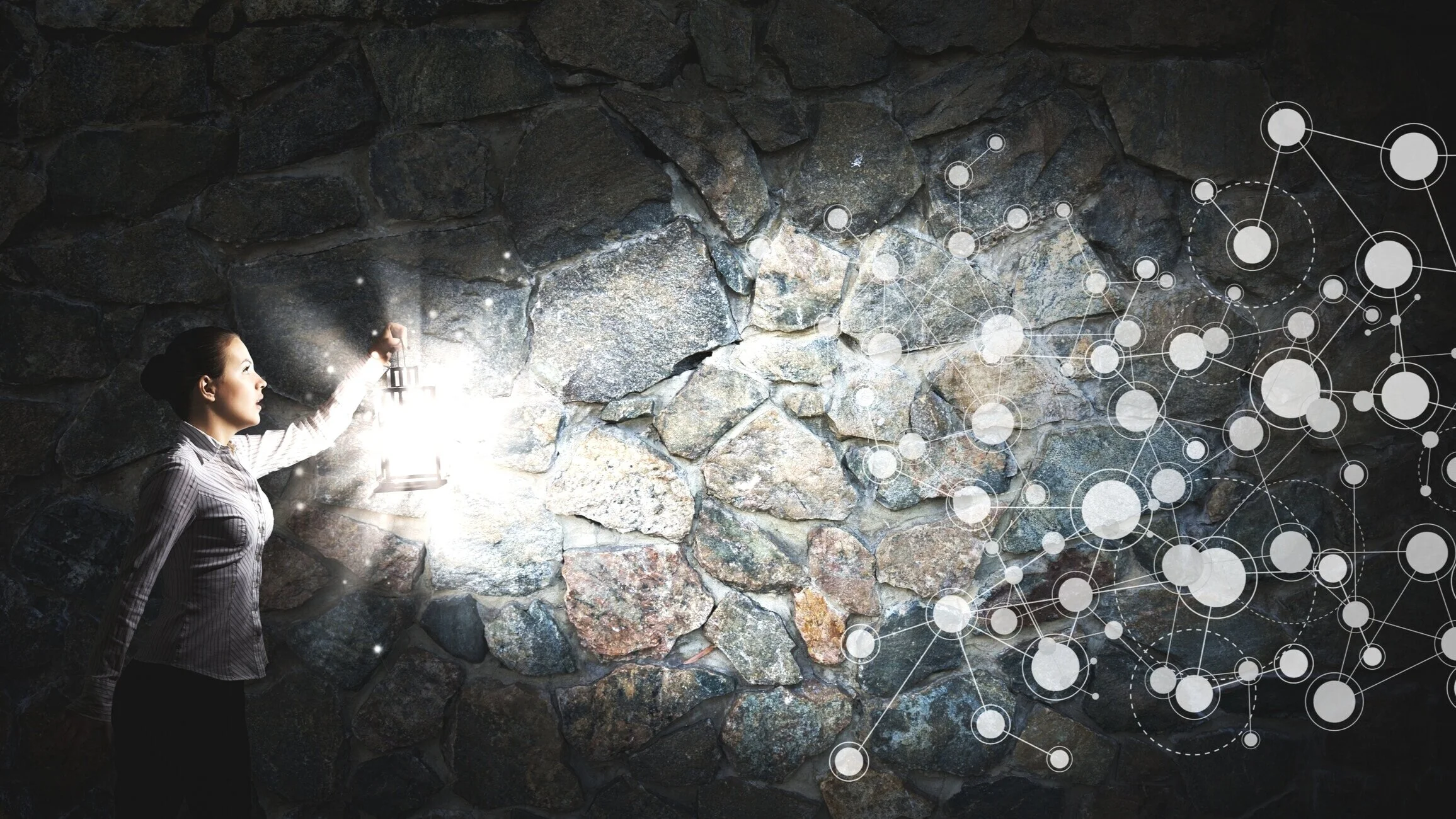Briefing 2020
Initial situation
We live in an era that has never been more secure than today. The supply of essential goods and services functions at a previously unknown level of price, quantity, quality and availability. All this is made possible by a highly labour-divided and transnationally organised logistics and networking and by two core infrastructure sectors: electricity and telecommunications supply.
The networking required for this not only creates advantages, as we are currently experiencing with the COVID-19 pandemic. While a pandemic is a creeping crisis that creates more and more supply problems, a very realistic Europe-wide power and infrastructure failure ("blackout") within the next five years would bring all vital supply services to an abrupt halt. Due to the breakdown of telecommunication services (mobile phones, internet, fixed network), society would disintegrate into micro structures. External help is as good as impossible. All that remains is self-help and decentralised self-organisation in the neighbourhood and in the communities.
Even if electricity is restored after many hours or days, it can be assumed that the telecommunications supply will not function adequately for some time to come (hardware damage, overloads). However, to ensure that a certain amount of emergency supply to the population and the sending of emergency calls remains possible, a decentralised structure that is as simple as possible is required.
This requires decentralised contact points that are ideally within walking distance (up to 3 km away, in rural areas rather further). These so-called self-help bases should be prepared by the municipalities and activated if necessary. In order for these to be able to keep in touch with each other and with the outreach organisations, simple communication links are necessary, which can be put into operation by laypersons and operated in an energy-saving manner. In addition, these should cost little to ensure broad availability. Ideally, they can also provide added value in everyday life.
The main purpose of these self-help bases is to reduce the workload of the emergency services, to enable emergency calls to be made and to improve resource management within the community.
An additional area of application for the emergency communication system could be the integration of important infrastructure areas. For example, to query the fuel situation of emergency power facilities (e.g. in hospitals) or to operate decentralized emergency call pillars.
Task
We are looking for ambitious makers who are interested in working with us on particularly innovative and barrier-free emergency communication system solutions that can be installed as comprehensively and cost-effectively as possible as a preventative measure and, in the event of a real crisis, can be used by the citizens of larger cities or even smaller communities for spontaneous self-organisation.
Here are some requirements as stops:
Low-cost/ low-energy
Extension of a radio cell 1-3 km in urban areas, in rural areas it can be several kilometres.
The connection between not directly connected radio cells should be able to be bridged with relay radio stations (radio cells without own self-help basis).
The radio cells should be able to be combined in a cluster with a maximum of 20 radio cells and form an organisational unit. The exchange of information takes place only within the cluster.
The exchange of information between different clusters should basically be realised via existing communication channels (BOS digital radio etc.).
The communication volume should be kept as low as possible. In principle, the volume of information could also be transmitted via a voice connection.
In the technical implementation, an autonomous mesh network is to be aimed at.
The communication may contain a transmission delay of a few minutes. However, emergency calls should be transmitted with priority.
In principle, the highest possible availability is desired, although everything is better than the status quo = ZERO.
If one or more radio cells fail, the communication of the remaining participants should continue to be possible (redundancies).
Transmission should be digital, with error correction and as resource-saving as possible. Encryption of the message content shall be provided.
The energy supply must be self-sufficient and must also permit improvisation (e.g. using a car battery or muscle power (crank generator)).
If possible, a user interface (app) via smartphone as a terminal connection would be desirable. In other words, a separation between the network and the application level, even though this would solve the charging problem. This would make it easier and familiar to use and perhaps even add value in everyday life (app development is currently underway). At the fallback level, this app must then be able to go into a simple (data) mode.
Perspectives
For years we have been intensively engaged in researching various blackout and crisis scenarios as well as developing possible solutions for a possible state of emergency. We are very happy to contribute this concentrated knowledge to our joint development work.
In the medium and long term, our goal is to work with you to develop concrete models that we can propose and offer to decision-makers at the federal, city and municipal levels as a care package for (supra)regional crisis prevention. In which setup or constellation this could take place in detail would depend entirely on the possibilities, interests and profiles of those involved. We are basically open to everything. Our main concern is to join forces and prepare ourselves in the best possible way for the undesirable event of a crisis.
Dates and processes
1. At the online kick-off on April 16th we presented our briefing more in detail (see video recording below) and exchanged first ideas with interested makers.
2. Since the kick-off-date we have already been able to develop an exciting new solution approach with a very ambitious multi-member maker team, which is essentially based on the technological setup described below.
3. It is always possible to join the existing team or to think about completely new approaches together with us. The next ideal opportunity to do so is the Virtual Future Tech Bootcamp, which takes place from June 29th to July 2nd. Representatives of the existing team as well as our crisis expert Herbert Saurugg will participate in order to support newcomers in the development of further solutions. But of course it is still possible to join the process at any time after the Bootcamp.
4. On September 30th the Best of Industry meets Makers event will take place during the Digital Days at the ERSTE Campus in Vienna, where we can present everything we have achieved together so far.
Contact
The President of GfKV, Herbert Saurugg, is available as contact person.
About the Österr. Gesellschaft für Krisenvorsorge
The Österreichische Gesellschaft für Krisenvorsorge (GfKV) sees itself as a non-partisan platform that shows complementary options for action to existing disaster prevention. The GfKV also sees itself as a networking platform for all those people and organizations who are prepared to assume social responsibility and leave the beaten track. The members work according to the following basic values: public welfare, connecting, cooperative, complementary and strengthening the self-efficacy of people.
GfKV was founded at the end of 2019 and is currently being established. Its president is Herbert Saurugg, MSc Major (ret.), an expert in preparing for the failure of vital infrastructures.
More details on www.saurugg.net and www.krisenvorsorge.jetzt
VIRTUAL FUTURE TECH BOOTCAMP BRIEFING SPECIALS 2020
Infineon & Thales - IoT on Train featuring the Sense2GoL radar sensor
Business Upper Austria - Visualize location factors through virtual reality
Salzburg Research - New physical distancing tools for supporting coronavirus prevention behavior
TELE Haase - The company of the future - energy saving and data
#IMM2020 MAIN BRIEFINGS
Infineon - Sensing the world with radar
Microtronics - Practical IoT proof-of-concepts with our IoT suite
Austrian Society for Crisis Prevention - Emergency communication systems for decentralised self-organisation in case of crisis
TELE Haase - The company of the future - energy self-sufficient and smart. Tomorrow even greener!
Thales Austria - Innovative and secure IoT solutions for railway infrastructure
ZKW Group - Light communication design

